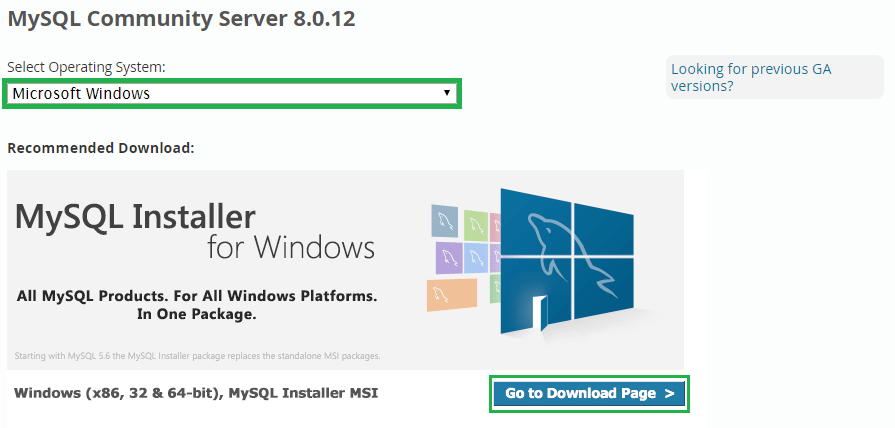

- #How do you open mysql download once its installed install#
- #How do you open mysql download once its installed drivers#
- #How do you open mysql download once its installed password#
- #How do you open mysql download once its installed windows#
It's created, but we're not "in the database" by default. Let's create a database called studies: mysql > create database studies You can read more about these by calling help again, but these are generally pretty straightforward. You asked for help about help category: "Data Manipulation"įor more information, type 'help ', where is one of the following We're interested in Data Manipulation, since we want to Create a table: mysql> help Data Manipulation So we can navigate to help where can be: Account Management, Compound Statements, Data Manipulation, Functions, Plugins etc. What we're really interested in is what commands can we use to manipulate data. Resetconnection(\x) Clean session context.įor server side help, type 'help contents'

Nowarning (\w) Don't show warnings after every statement. Warnings (\W) Show warnings after every statement. Might be needed for processing binlog with multi-byte charsets. Takes database name as argument.Ĭharset (\C) Switch to another charset. Status (\s) Get status information from the server. Optional arguments are db and host.Įgo (\G) Send command to mysql server, display result vertically. Note that all text commands must be first on line and end with ' 'Ĭlear (\c) Clear the current input statement.Ĭonnect (\r) Reconnect to the server. Now, let's run the help command and see what we can do: List of all MySQL commands: Type '\c' to clear the current input statement. Other names may be trademarks of their respective Oracle is a registered trademark of Oracle Corporation and/or itsĪffiliates. Server version: 8.0.0-log MySQL Community Server (GPL)Ĭopyright (c) 2000, 2019, Oracle and/or its affiliates. Logging in will prompt you with the MySQL Monitor: Welcome to the MySQL monitor. The -u flag represents the username and the -p flag represents the password. Of course, we have to provide credentials alongside the initial command: > mysql -u root -p simplepassword If you've added MySQL's bin folder as an environment variable, you can use it through the terminal just by calling mysql. Note: MySQL statements are ended with a semi-colon ( )

#How do you open mysql download once its installed password#
Many people decide to leave the password blank, to make things simpler on their dev environment. We'll be using a root user with the password simplepassword. For an example, Connector/J is the official Java Database Connectivity (JDBC) driver, whereas Connector/Python is the official Python connector.Īll of the connectors can be found on the MySQL Downloads page.
#How do you open mysql download once its installed install#
Now, depending on which language you wish to use MySQL with, you'll need to install a Connector which is basically a driver specific for every language. If you don't run into any problems - choose a password and wait for the installation procedure to go through all its paces. The installer is fairly straightforward but you might run into several problems. To download the latest version of MySQL you need to go to the official website and download the community version.
#How do you open mysql download once its installed windows#
Windows (especially Windows 10) requires a bit of work. In this article, we'll download and install MySQL on Windows and validate how it works by creating a simple database with a couple of tables. Sun Microsystems was then acquired by Oracle in 2010, leaving MySQL in their ownership. and later on bought by Sun Microsystems in 2008. It's a free, open-source, trusted database management system used by the likes of WordPress, Facebook, Twitter and YouTube, created in 1995.
#How do you open mysql download once its installed drivers#
MySQL uses a standardized SQL data language and works on many operating systems with drivers that allow developers to connect with all of the popular programming languages. MySQL is the most widely used Relational Database Management System (RDBMS) in the world, supplying around a third of current applications with data.


 0 kommentar(er)
0 kommentar(er)
